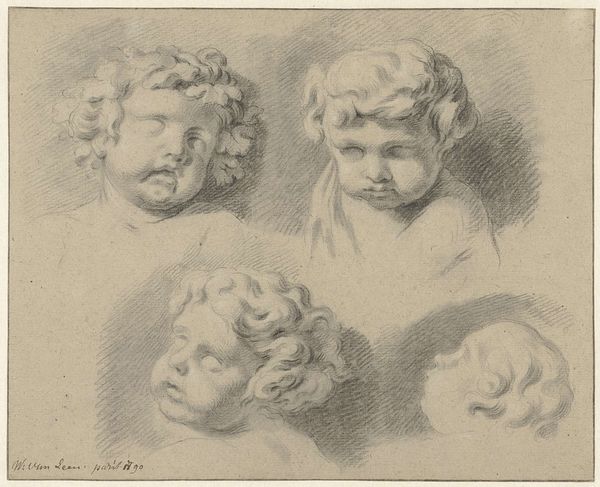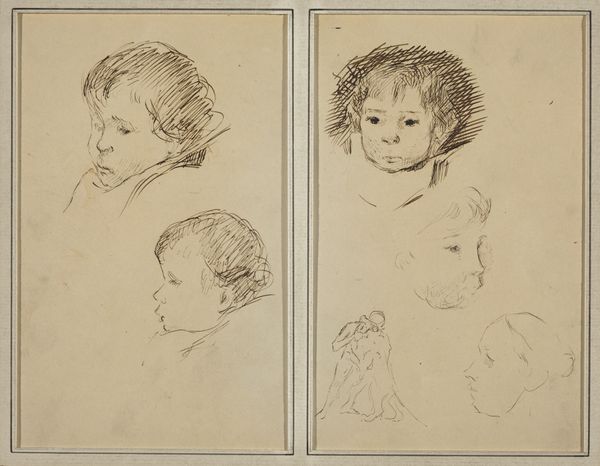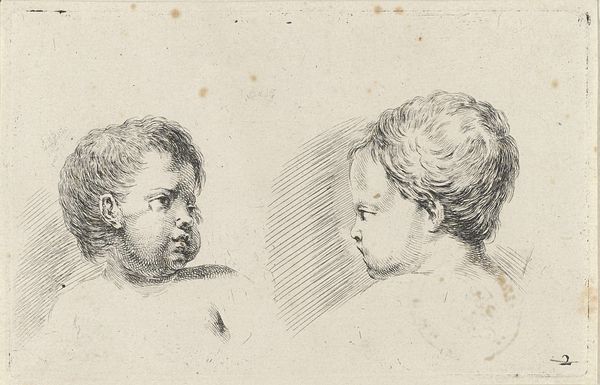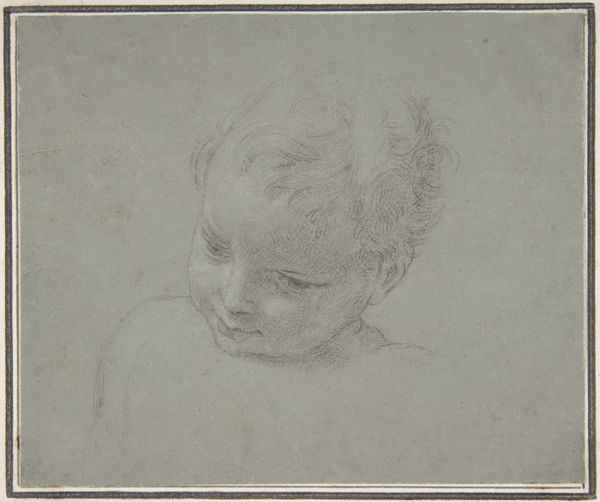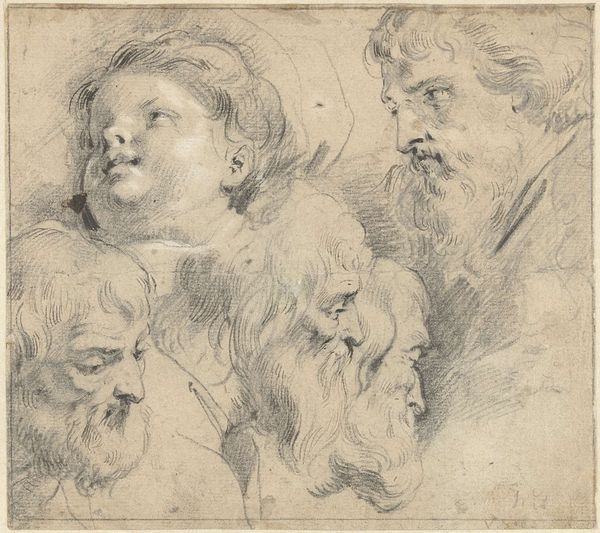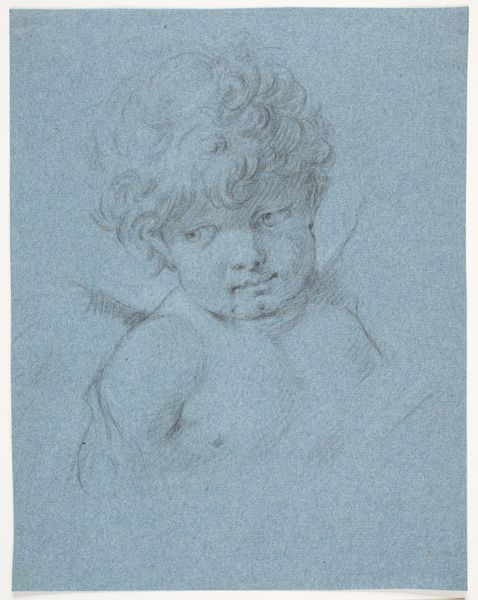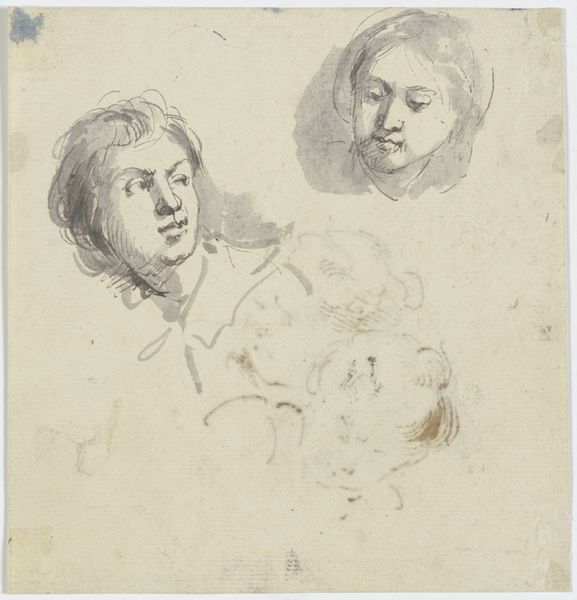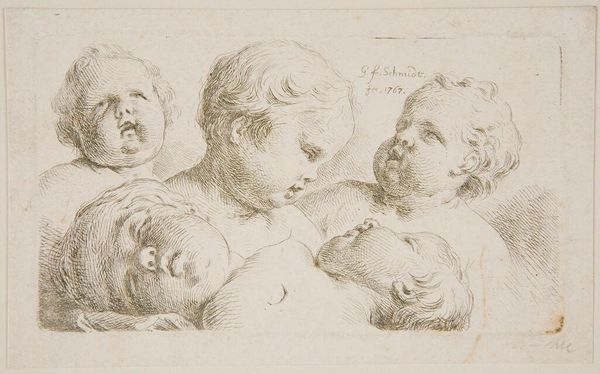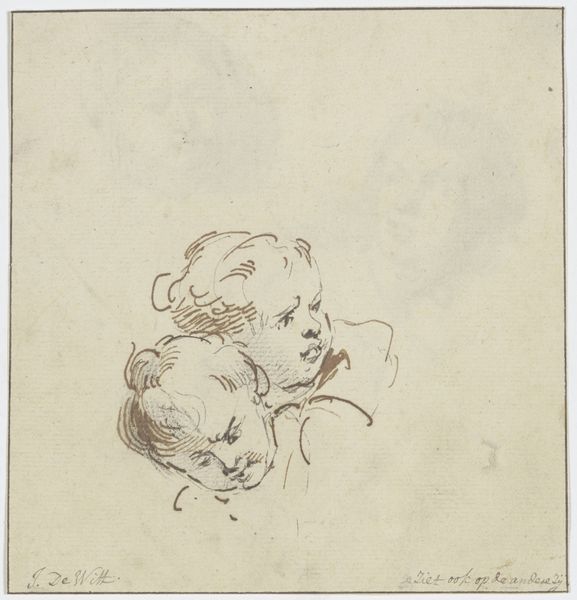
drawing, paper, chalk, charcoal, pastel
#
portrait
#
pencil drawn
#
drawing
#
baroque
#
charcoal drawing
#
paper
#
pencil drawing
#
chalk
#
charcoal
#
pastel
Copyright: Public Domain
Jacob de Wit rendered these five studies of children’s heads in chalk. Immediately, the cherubic faces evoke the artistic traditions of the Renaissance, particularly the putti seen in the works of Raphael and his contemporaries. These images of chubby children, often winged, symbolized divine love and innocence. Yet, such figures have deeper roots, echoing the Eros figures of antiquity—symbols of desire and affection. The metamorphosis from pagan symbol to Christian icon reveals how cultural memory reshapes itself. Observe the varying expressions and directions of the faces. There's a collective, yet individual, sense of emotion, subtly capturing the multifaceted nature of childhood. This image plays on the subconscious, engaging with our innate recognition of innocence and tenderness. Thus, the image transcends its immediate context, linking us to a chain of artistic and emotional expressions across time. From ancient Eros to Renaissance putti and beyond, the symbol of the child continues to reappear.
Comments
No comments
Be the first to comment and join the conversation on the ultimate creative platform.
